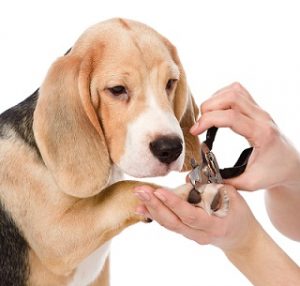 Our vets here at Southern Animal Health have a special focus on canine lameness as well as many years of experience in its diagnosis and treatment. We are proud to provide many treatment and surgical options for limping dogs that other general practice clinics do not offer. Specialist surgical procedures can also be performed within our hospital.
Our vets here at Southern Animal Health have a special focus on canine lameness as well as many years of experience in its diagnosis and treatment. We are proud to provide many treatment and surgical options for limping dogs that other general practice clinics do not offer. Specialist surgical procedures can also be performed within our hospital.
Here are 10 of the most common reasons for limping in dogs:
1. Cruciate Ligament Disease
The cruciate ligament is the major stabiliser of the knee joint. When the ligament is weakened or torn, the joint becomes unstable and painful, leading to progressive osteoarthritis. The best treatment is surgical stabilisation of the joint. SAH is one of the only clinics to offer multiple options for cruciate disease, including TPLO, TWO, and Tightrope, as well as the standard De Angelis stabilisation procedure. (Our head surgeon Dr Karin Davids was one of the first to introduce the exciting new Tightrope procedure, having brought this skill back from America in 2015). SAH vets take the time to explain each procedure and recommend the best option for your dog.
2. Osteoarthritis
As pets age, wear and tear on the joints results in osteoarthritis (arthritis) which is a painful condition. Treatment involves a multimodal approach, often involving a combination of anti-inflammatories, joint protective drugs, PRP Treatment, diet and other medications. Sometimes surgery may be required. We work with you to tailor the best treatment plan to suit your dog.
3. Hip Dysplasia
Hip dysplasia is a developmental problem of the hip joints that affects young dogs and leads to early and progressive osteoarthritis of the hip. SAH offers surgical procedures for early treatment to minimise/prevent arthritis developing, as well and both surgical and medical management of late-stage dysplasia. It is important to note that early intervention between 10 and 14 weeks of age gives the best long-term outcome.
4. Elbow Dysplasia
Elbow dysplasia is also a developmental problem of young dogs. There are a number of conditions that are the cause (in isolation or in combination) of Elbow Dysplasia – fragmented coronoid process, ununited anconeal process, osteochondritis dissecans (otherwise known as OCD) and joint incongruency. SAH offers a range of early intervention procedures as well as management of late-stage disease.
5. Luxating Patella (Dislocating Kneecap)
When the kneecap moves in and out of position, it causes discomfort and can predispose to Osteoarthritis and cruciate ligament injury. More commonly, it occurs in small breeds of dog but we do also see it in larger breeds. It may cause a ‘skipping’ type of limp which occurs intermittently. Surgical correction if the best form of treatment.
6. Spinal Disease or Injury
The most common of these if Intervertebral Disc Disease (IVDD). We also see spinal malalignments, intervertebral ligament injuries, lumbosacral disease and degenerative myelopathies. Diagnosis of spinal problems involves a careful and detailed musculoskeletal and neurological examination. X-rays or CT scans may also be indicated. CT scanning (if required), can be organised within our hospital. There is absolutely no need for you to transport your pet to another facility, we take care of it for you.
7. Medial Shoulder Instability
This is an often unrecognised or misdiagnosed condition involving stretching or tearing of the ligaments and soft tissues on the inside of the shoulder joint, causing ongoing front leg lameness. It is often poorly responsive to anti-inflammatory treatment. Arthroscopy may be required for diagnosis and treatment may involve a steroid injection into the shoulder joint, along with strict rest and avoidance of jumping. Sometimes (though not often), surgical stabilisation of the shoulder joint is required.
8. Nail and Pad Problems
Long, torn or infected toenails will cause limping. Infection of the skin between the toes, grass seed migration into the feet, and foot pad injuries are other common causes of lameness.
9. Fractures
Our surgeons have a full range of orthopaedic instrumentation and implants (plates, pins, wires etc.) to repair fractured bones. Dr Karin Davids has plenty of experience in repairing a wide range of fractures which other vets may refer on to a specialist. If specialist surgery is required, we can organise for it to be performed within our hospital. There’s no need to transport your pet to another facility.
10. Bone Tumours
Tumours in the bone are often very painful and can lead to weakening and fracture of the bone. The most common tumour type that we see is osteosarcoma. We offer a comprehensive diagnostic testing and staging protocol, along with both surgical and chemotherapeutic options for treatment of bone cancer in dogs.
Please feel free to call or visit for any limping concerns. Any of our vets will be delighted to assist. In complicated or difficult to diagnose cases, a second opinion can also be provided by our most experienced clinicians.

